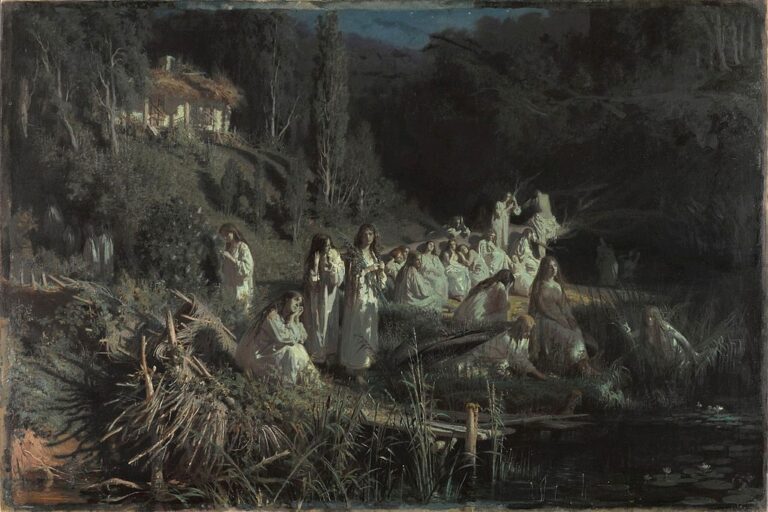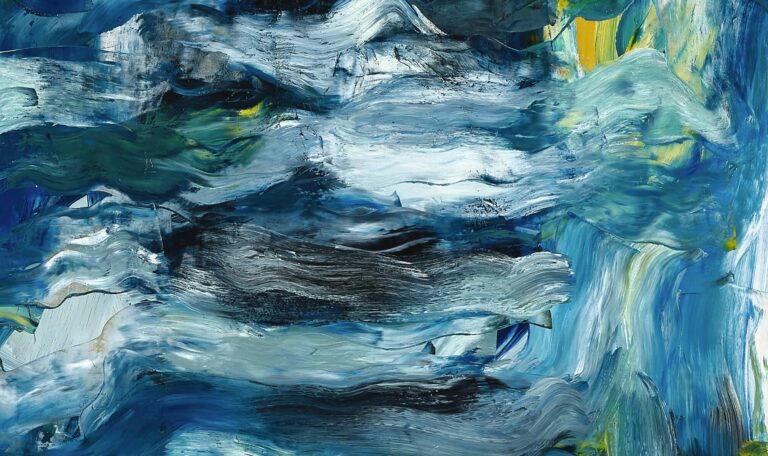Paul Nash: Painter of Surreal Landscapes and War Scenes
Born: 11 May 1889, London, United Kingdom
Death: 11 July 1946, Bournemouth, United Kingdom
Art Movement: Surrealism, Modernism
Nationality: British
Influenced By: Samuel Palmer and Dante Gabriel Rossetti
Institution: Slade School of Art, London
Paul Nash: Painter of Surreal Landscapes and War Scenes
Life and Career of Paul Nash
Paul Nash was a British artist who made significant contributions to landscape painting and war art in the early 20th century. His work spanned multiple artistic movements and was shaped by his experiences in both World Wars.
Early Life and Education
Paul Nash was born on May 11, 1889, in London. He grew up in Buckinghamshire, where he developed a love for nature and landscapes.
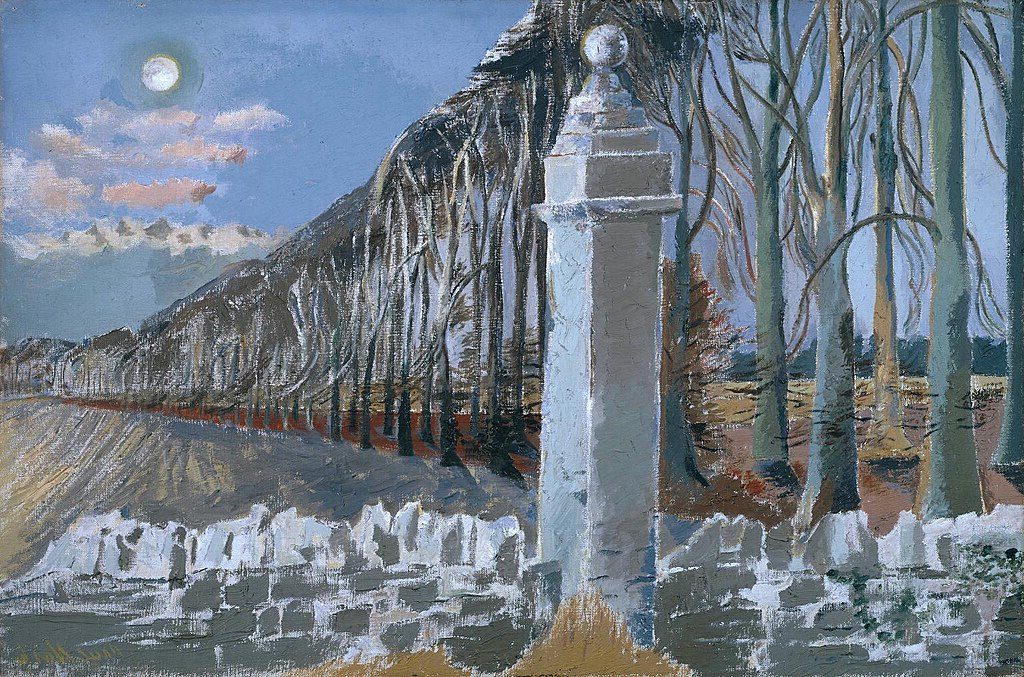
Pillar and Moon (1932–1942) by Pail Nash
Nash studied at several institutions to hone his artistic skills. He attended St. Paul’s School and later enrolled at the Chelsea Polytechnic. Nash also studied at the London County Council School of Photo-Engraving and Lithography.
In 1910, Nash began his formal art education at the Slade School of Art. This prestigious institution helped shape his early artistic style and techniques.
World Wars and Role as an Official War Artist
World War I had a big impact on Nash’s life and art. In 1914, he joined the Artists’ Rifles regiment. Nash later became an official war artist, creating powerful images of the war-torn landscapes.
His paintings from this time showed the destruction of nature and the harsh realities of war. These works helped establish Nash as a leading British artist.
During World War II, Nash again served as an official war artist. He painted scenes of aerial warfare and created memorable images of downed German planes.
Post-War Period and Later Career
After World War I, Nash’s art changed. He began to explore surrealism and modernism in his landscape paintings.
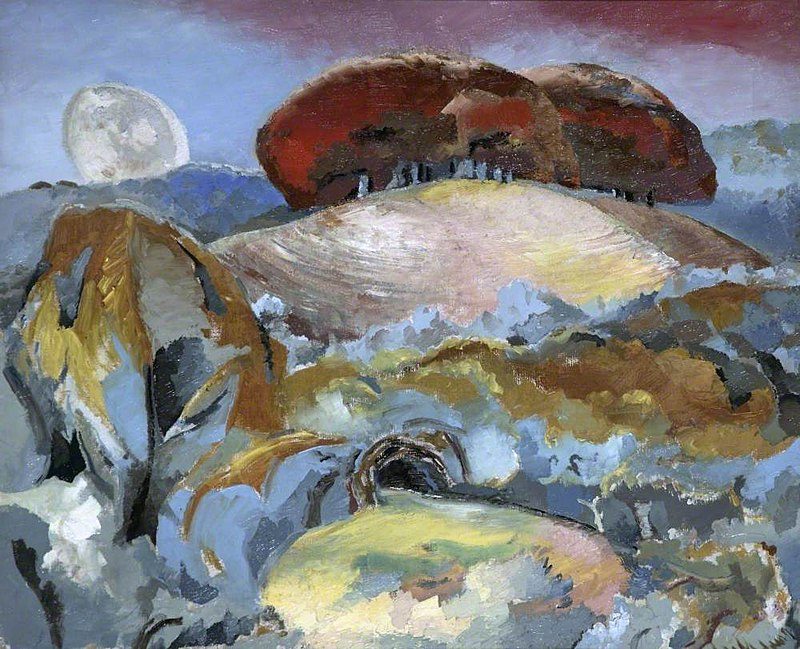
Landscape of the Moon’s Last Phase (1944)
Nash also worked in other areas of art during this time. He became a skilled book illustrator, designer, and photographer. Nash created stage designs, fabric patterns, and posters. His diverse talents allowed him to work on many different projects.
Nash continued to paint and exhibit his work until his death on July 11, 1946. His art left a lasting impact on British modernism and landscape painting.
Artistic Style and Influence
Paul Nash developed a unique artistic style that blended landscape painting with modernist elements. He played a key role in shaping British art movements and collaborated with other influential artists of his time.
Development of a Unique Modernist Style
Nash’s style evolved from traditional landscape painting to a more modernist approach. He mixed natural forms with geometric shapes, creating a distinctive visual language.
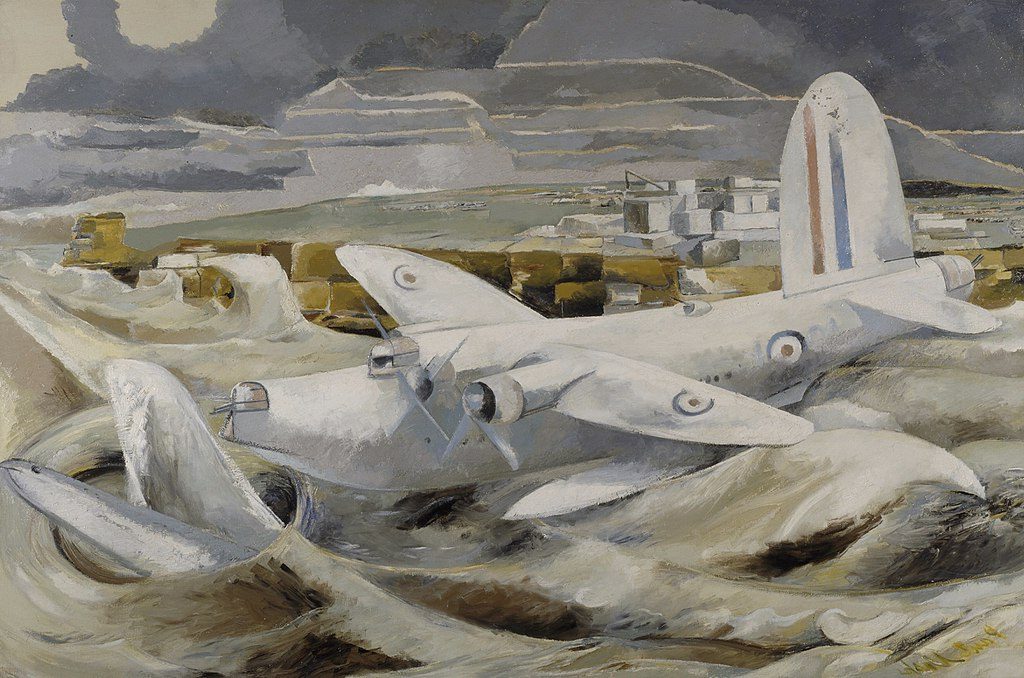
Paul Nash’s Defence of Albion (1942)
His early work showed influences from paintings of Samuel Palmer and Dante Gabriel Rossetti. Nash’s landscapes often had a dreamlike quality, blending reality with imagination.
As he grew as an artist, Nash began to incorporate elements of abstraction and symbolism into his paintings. This shift marked his move towards a more modernist style.
Contributions to British Art Movements
Nash was a founding member of Unit One, a group that promoted modern art in Britain. He helped introduce surrealism to the UK art scene.
His war paintings captured the harsh realities of conflict while maintaining an artistic vision. These works had a significant impact on British war art.
Nash’s involvement with the Omega Workshops allowed him to experiment with applied arts and design. This experience broadened his artistic range.
Collaboration and Interaction with Other Artists
Nash worked closely with other British artists, fostering a vibrant creative community. He shared ideas and techniques with fellow painters and designers.
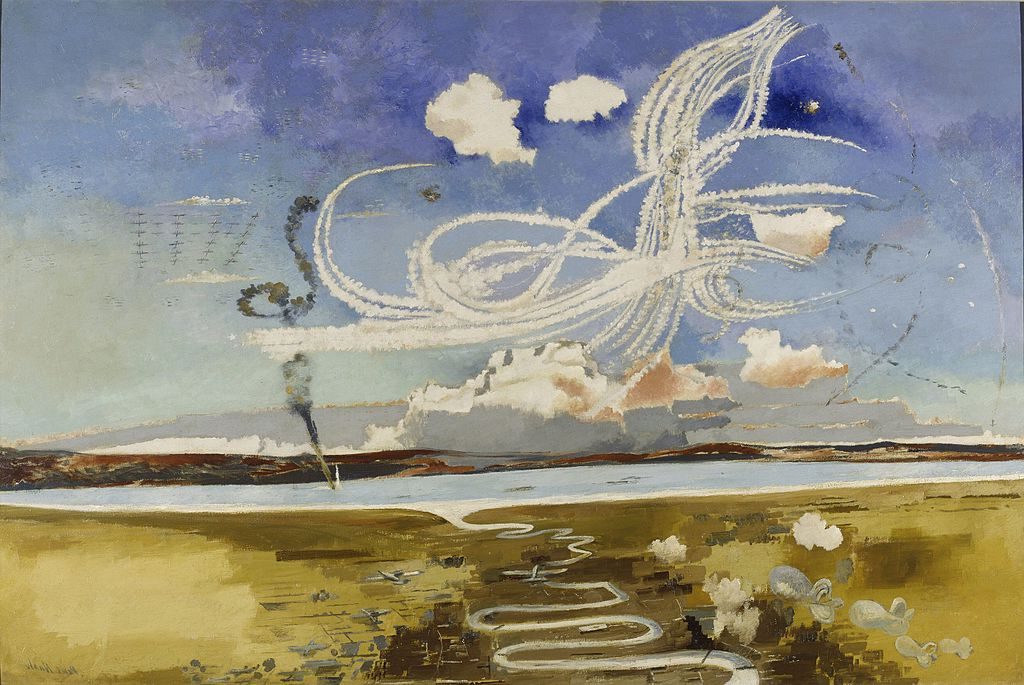
Battle of Britain (1941) by Paul Nash
His friendship with surrealist painter Giorgio de Chirico influenced Nash’s later works. This connection helped Nash develop his own surrealist style.
Nash also mentored younger artists, passing on his knowledge and vision. His influence can be seen in the work of many British painters who followed him.
Notable Works and Legacy
Paul Nash created powerful paintings that changed how people saw landscapes. His art showed the beauty and pain of nature, especially during wartime.
Famous Paintings and Series
Nash’s “We Are Making a New World” (1918) shows a destroyed forest after World War I. The painting has bare trees and a blood-red sky. It is one of his most famous works.

We Are Making a New World (1918)
“The Menin Road” (1919) depicts a war-torn landscape with broken trees and muddy roads. Nash painted it as an official war artist.
“Totes Meer” (Dead Sea) (1940-41) shows wrecked German planes in a field. The twisted metal looks like waves in a sea.
Nash’s “Landscape at Iden” (1929) and “Wittenham Clumps” series showcase his love for the English countryside. These works blend real places with dream-like elements.
Influence on Landscape Art and Surrealism
Nash changed how artists painted landscapes. He mixed real scenes with strange, dream-like images. This style influenced both landscape art and Surrealism.
His paintings of Avebury stone circles and Iron Age hill forts brought ancient sites to life. He often added odd objects like geometric shapes or floating orbs to these scenes.
Nash’s war paintings showed the true horror of battle through damaged nature. This approach was new and powerful.
He also created “aerial creatures” and “aerial flowers” in his art. These odd flying forms appeared in many of his later works.
Paul Nash’s Enduring Impact on Art
Nash’s art still inspires people today. His mix of real and imaginary elements changed British art forever.

The Mule Track (1918) by Paul Nash
His war paintings showed a new way to depict conflict. They focused on nature’s destruction rather than human casualties.
Nash’s love for the English countryside helped spark interest in British landscapes. His paintings of places like South Oxfordshire became iconic.
His use of seasons and weather to show mood influenced later artists. Nash could make a calm scene feel unsettling or a stormy one feel peaceful.
Frequently Asked Questions
Paul Nash made significant contributions to British art through his surrealist landscapes and war paintings. His work explored themes of nature, conflict, and the human experience.
How did Paul Nash contribute to the art world?
Nash pioneered modernism in English art. He created surreal landscapes that blended reality and imagination. Nash also served as a war artist, depicting the horrors of both World Wars through his paintings.
What are the significant themes in Paul Nash’s war paintings?
Nash’s war paintings showed the brutal impact of conflict on landscapes and people. He painted destroyed forests, shattered buildings, and desolate battlefields. His works captured the psychological toll of war.
How has Paul Nash’s work influenced modern art?
Nash helped bring surrealism and modernism to British art. His unique style inspired later artists to experiment with abstract forms and dreamlike imagery. Nash’s war paintings also influenced how later artists portrayed conflict.
Which techniques are most characteristic of Paul Nash’s painting style?
Nash often used geometric shapes and distorted perspective in his paintings. He combined realistic and abstract elements to create surreal scenes. Nash also employed vivid colors and sharp contrasts to evoke strong emotions.
In what ways did Paul Nash participate in World War 1?
Nash served as an official war artist during World War 1. He created paintings and drawings that showed the devastation of battle. Nash’s experiences in the war deeply affected his art and worldview.
What is the relationship between Paul Nash and other notable artists of his time?
Nash was part of a group of British modernist artists. He worked with and influenced painters like Ben Nicholson and Barbara Hepworth. Nash also had connections to international surrealist artists through his involvement in art movements.



